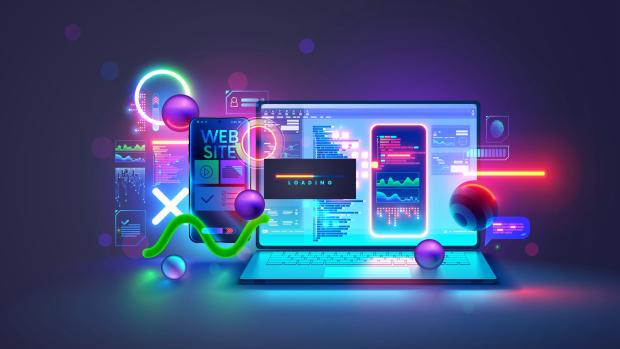Discover how web development impacts site speed and performance
Finding the Uses of Website Design for Enhancing User Experience
Web style substantially influences customer experience across electronic platforms. By concentrating on customer requirements, designers produce web sites that are not just visually attractive but additionally practical and easily accessible. Crucial element such as receptive style and instinctive navigating play important roles in enhancing usability. The obstacle lies in recognizing how these parts engage to meet developing user expectations. The exploration of these factors reveals insights that could transform electronic interaction.
Recognizing User Requirements and Assumptions
Exactly how can Web designers efficiently straighten their productions with user needs and expectations? To achieve this, developers should engage in extensive user research study to record the preferences, actions, and pain factors of their target market. Making use of techniques such as surveys, interviews, and usability testing, designers gather beneficial understandings that direct their decision-making procedure.
Creating customer characters can further aid in visualizing different customer segments, making certain that design selections reverberate with real users. Additionally, developers must focus on user-friendly navigating and clear phone call to activity, which help with seamless interactions.
The Importance of Responsive Style
As users increasingly gain access to websites on a range of gadgets, receptive layout has become important for developing a favorable individual experience. This method enables Web pages to adapt effortlessly to various screen dimensions, making sure that content is quickly legible and accessible, no matter whether a customer is on a tablet, mobile phone, or desktop computer .
Receptive layout enhances usability by providing a constant experience, lowering the demand for too much scrolling or zooming. Furthermore, online search engine favor receptive websites, which can improve a website's presence and reach. This layout technique also simplifies growth efforts, as it removes the need for several versions of a website customized to certain gadgets.
Including responsive layout not just satisfies individual assumptions however additionally lines up with modern-day Web criteria, fostering interaction and complete satisfaction. Ultimately, it symbolizes a dedication to access and inclusivity, crucial components for any effective online visibility.
Developing User-friendly Navigation
An efficient website design not just includes responsive designs however also focuses on instinctive navigation, which is crucial for assisting individuals via a website effortlessly. Intuitive navigating assurances that individuals can easily find info without unnecessary initiative. Secret components include a clear menu structure, rational classification of material, and well-known icons or tags.
Consistency in navigation placement across different pages promotes experience, enhancing individual convenience. Making use of breadcrumb tracks allows individuals to track their location within the site, helping in backtracking and exploration. Furthermore, maximizing navigating for smart phones is essential, as numerous customers access sites via tablet computers and smart devices.
Including a search bar can in addition improve the user experience, allowing fast accessibility to details material. Overall, instinctive navigating minimizes frustration, motivates longer site check outs, and eventually results in higher user fulfillment and involvement. By concentrating on navigating design, Web developers can substantially enhance the total user experience.
Utilizing Visual Power Structure Properly
Efficient Web layout hinges on the critical use of visual power structure, making sure that users can easily navigate web content and understand the most essential information at a look. By focusing on components based on their significance, developers can assist users' attention towards essential locations, such as headings, calls-to-action, and crucial images.
Strategies such as size, placement, color, and contrast play crucial duties in developing this power structure. As an example, larger message often symbolizes better importance, while contrasting shades can accentuate vital activities. In addition, consistent alignment and spacing assistance develop an arranged design, making it simpler for individuals to refine details swiftly.
Moreover, integrating images strategically can improve understanding and retention of content. When made use of efficiently, a well-defined aesthetic hierarchy not only improves usability yet additionally enhances the total customer experience, permitting users to engage meaningfully with the internet site's objectives.
Enhancing Readability and Availability
Aesthetic pecking order substantially impacts how customers engage with a site, however similarly essential is guaranteeing that material continues to be understandable and accessible to all audiences. Efficient Web design employs clear typography, consisting of ideal font dimensions, line spacing, and comparison to boost readability. The usage of high-contrast shade systems can aid those with aesthetic problems, while larger text dimensions benefit users with reviewing troubles. Furthermore, integrating alt message for photos warranties that individuals making use of display readers can access vital details.
Developers must likewise think about the layout and structure of material, utilizing headings and bullet factors to break up big blocks of text. This not just help skimming but also assists customers with cognitive specials needs. Ultimately, focusing on readability and ease of access fosters a comprehensive atmosphere, enabling diverse audiences to involve fully with the website's content (website design). By dealing with these aspects, Web designers can greatly boost the total user experience
Integrating Engaging Visual Elements
Including interesting aesthetic aspects is essential for boosting customer experience in Web design. Shade psychology plays a considerable click this link duty in influencing individuals' habits and emotions, while interactive graphics can capture attention and urge expedition. Together, these aspects develop an extra attractive and dynamic on-line atmosphere.
Value of Color Psychology
The importance of color psychology in Web design can not be overstated, as it plays an important duty in forming customer assumptions and habits. Shades evoke feelings and can influence how users communicate with a website. Blue often conveys trust fund and expertise, making it a prominent choice for financial establishments. On the other hand, red can cause urgency and excitement, commonly used in sales promos. Recognizing the mental effects of color enables developers to create a natural aesthetic experience that reverberates with individuals. Furthermore, regular color design boost brand name identification and recognition, making sure customers associate certain colors with certain brand names. Ultimately, thoughtful application of color psychology can substantially enhance customer interaction and fulfillment, making it a basic aspect of efficient Web design.
Making Use Of Interactive Graphics
Engaging individuals via interactive graphics can substantially improve their total experience on a web site. These aspects, such as computer animations, infographics, and clickable visuals, cultivate a much deeper link between individuals and the material. By urging expedition and participation, interactive graphics can make complicated details extra absorbable and keep customers' navigate here attention much longer. Additionally, they provide a chance for customers to interact with the site in a purposeful way, causing increased contentment and a greater likelihood of returning. Nevertheless, it is important to stabilize interactivity with use; extremely complex graphics may confuse users. Effectively implemented, interactive graphics can change an easy watching experience right into an interesting trip, eventually adding to improved user experience and website performance.
Continuous Testing and Improvement Techniques
Continual screening and renovation strategies work as necessary parts in maximizing Web layout for user experience. By executing iterative testing, designers can collect real-time comments on user communications, enabling them to identify discomfort factors and areas for enhancement - web design. A/B screening, functionality testing, and warmth mapping work approaches that give insights into user actions, making it possible for enlightened design choices
Furthermore, these methods urge a culture of recurring refinement, as opposed to an one-time launch. Web developers can use analytics tools to monitor efficiency metrics, such as bounce rates and conversion rates, which lead needed adjustments. Routine updates based upon individual responses not just improve functionality but likewise foster individual complete satisfaction and commitment.
Ultimately, continuous testing and renovation create a receptive website design environment where individual experience is focused on, ensuring that the site progresses alongside user requirements and technical developments. This positive technique brings about a more engaging and reliable on the internet existence.
Regularly Asked Inquiries
Exactly How Can Shade Psychology Influence Individual Experience in Website Design?
Shade psychology significantly affects individual experience in website design by evoking emotions and leading actions. Various shades can produce associations, improve readability, and impact customer engagement, eventually shaping assumptions of a brand or web site's functionality.
What Role Does Typography Play in Individual Engagement?
Typography significantly influences user involvement by boosting readability, developing pecking order, and conveying brand individuality. Efficient font style choices can capture attention, evoke emotions, and guide users via material, ultimately improving total communication and satisfaction with the website.

Just How Do Cultural Differences Influence Website Design Preferences?
Social distinctions significantly influence Web design choices, impacting read review shade choices, format, imagery, and navigating designs. Comprehending these variants allows designers to develop even more appealing and relatable experiences customized to varied individual histories and assumptions.

What Equipment Can Help Examination Customer Experience Successfully?
Numerous tools, including Google Analytics, Hotjar, and UsabilityHub, successfully examination customer experience. These platforms offer understandings right into user actions, assist in A/B testing, and gather comments, assisting designers make notified decisions to boost general functionality.
Exactly how Typically Should a Web Site Be Upgraded for Ideal Customer Experience?
A website needs to be redesigned every 2 to 3 years to keep ideal individual experience. Routine updates assure the layout stays contemporary, receptive, and straightened with advancing user requirements and technical innovations, enhancing overall engagement.
Developing customer characters can additionally assist in imagining different user sectors, ensuring that design selections resonate with real customers. As customers progressively access websites on a selection of tools, receptive style has become essential for producing a positive user experience. Integrating appealing aesthetic aspects is important for enhancing individual experience in Web design. Ultimately, continual testing and improvement develop a receptive Web style atmosphere where individual experience is focused on, guaranteeing that the site develops along with user needs and technical innovations. Color psychology considerably affects customer experience in Web layout by guiding and evoking emotions actions.